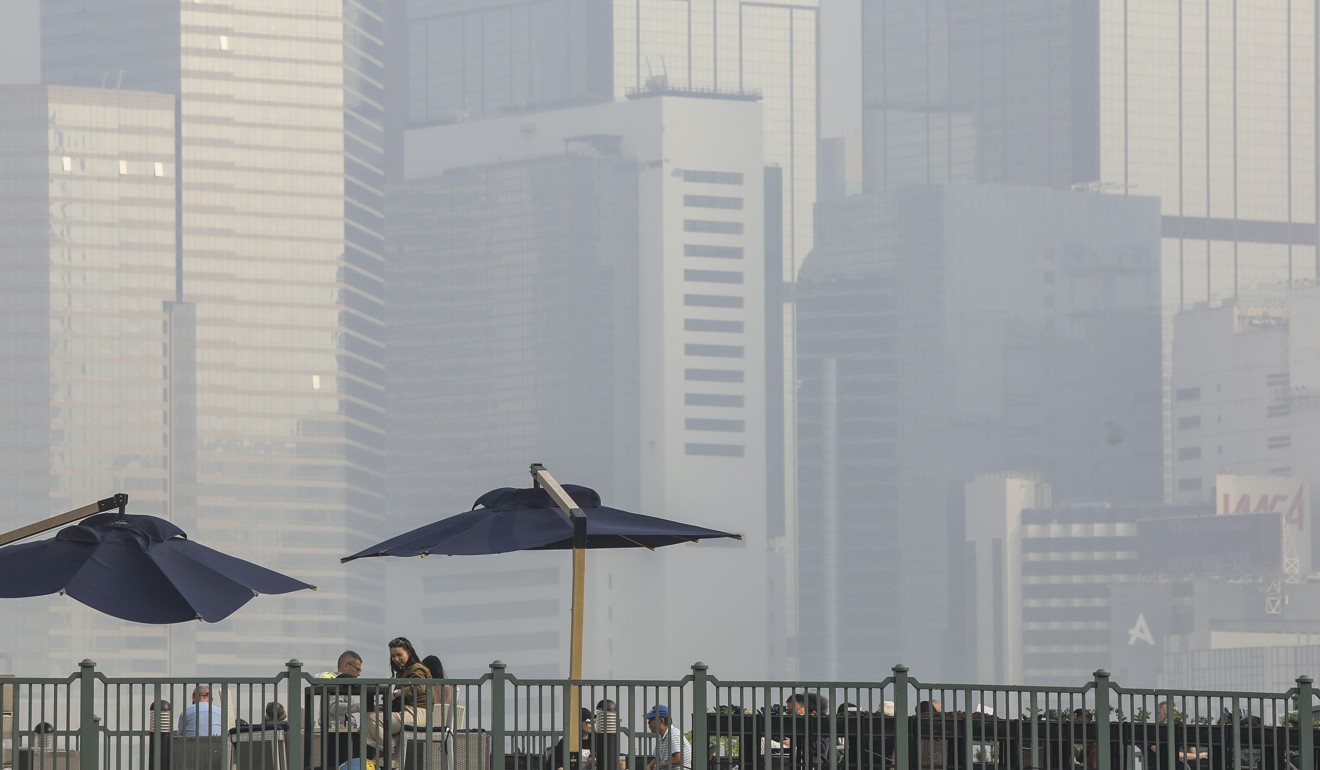
Hong Kong chokes under haze and high pollution levels, but clearer air expected with next week’s monsoon
- Fifteen of city’s 16 air quality stations record high to very high levels of health risk
- Weather expert says stale conditions are from lack of wind, but this may improve from Sunday
Hongkongers can expect another smog-filled day on Sunday before monsoon winds bring a breath of fresh air, as 15 of the city’s 16 air quality stations recorded high to very high health warning levels on Saturday evening.
“The Air Quality Health Index is likely to reach the very high health warning level on Sunday afternoon, but the situation may start to get better at night,” a spokesman for the Environmental Protection Department said on Saturday.
Since early morning, the city has been shrouded in a faint yellow haze and by noon, the Observatory reported that visibility at Victoria Harbour had dropped to a “rather low level” of 2km, worsened by windless conditions.

By 6pm, 12 stations reported a “very high” health risk, with two in Central and Mong Kok reaching the mark at noon, and others in Central and Western district, Island East Causeway Bay, Sham Shui Po, Kwun Tong, Tsuen Wan, Tseung Kwan O, Yuen Long, Tung Chung and Tai Po recording similar levels from 1pm.
Three stations in Kwai Chung, Sha Tin and Tap Mun (Grass Island) reported “high” health risks.
Fewer days of dirty air but it’s not all good news, green group says
The public is advised to reduce outdoor activities and physical exertion in very high risk areas, while children and the elderly are advised to stay indoors in areas with high risk.
Lee Fung-ying, a scientific officer at the Observatory, said the haze had been in place for a few days but became more severe on Saturday because “there was basically no wind”.
“With a wind speed between 2km/h and 10km/h, particulate matters are more easily concentrated in the air, resulting in haze and relatively low visibility,” Lee said.
The department spokesman said the pollutants had affected not only Hong Kong but the Pearl River Delta in general since Saturday morning, and sunlight facilitated the formation of smog by accelerating the photochemical effect.
As of 6pm, in areas reporting a very high health risk, the concentrations of two major particulate matters – PM10 and PM2.5 – exceeded 150 micrograms per cubic metre and 90 micrograms per cubic metre respectively.
Tai Po, Causeway Bay and Central appeared to be worst hit, with concentrations of PM10 exceeding 200 micrograms per cubic metre, and levels of PM2.5 up to 163 micrograms per cubic metre.
“The daily average concentration of PM10 and PM2.5 is expected to exceed the standard limits set under the air quality index, reaching the levels of 130 micrograms per cubic metre and 90 micrograms per cubic metre respectively,” the department said.
According to standards recommended by the World Health Organisation, the average concentration of PM10 and PM2.5 over a period of 24 hours should be no more than 50 and 25 micrograms per cubic metre respectively.
We may have to wait for the next round of monsoon
PM10 and PM2.5 pollution have health impacts even at very low concentrations, according to WHO, because the particles are so small they can penetrate and lodge deep within the lungs.
The loss of wind, according to Lee, was due to the departure of the last northeast monsoon.
“We may have to wait for the next round of monsoon to bring us greater movement in the weather system,” Lee said. “There may be more wind starting from Sunday.”
The Observatory said it expected temperatures to drop below 20 degrees Celsius on Wednesday with the monsoon.

